#Anti-Infective Endotracheal Tube Market
Explore tagged Tumblr posts
Text
Anti-Infective Endotracheal Tube Market Poised to Garner High Revenues through 2031 due to Rising Prevalence of Hospital Acquired Infections
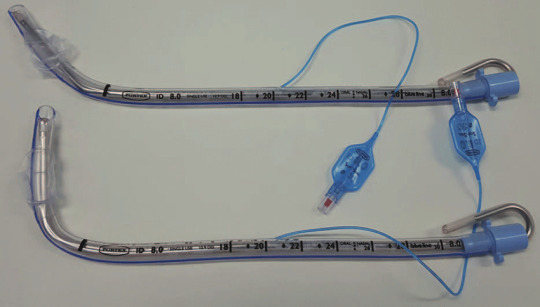
The Anti-Infective Endotracheal Tube market comprises endotracheal tubes coated or impregnated with antimicrobial agents to prevent bacterial colonization and restrain the development of biofilms on tube surfaces. These tubes are used during intubation or mechanical ventilation in intensive care units or operating rooms to offer a secure airway and protect the lungs from aspiration. Demand for such tubes has increased in hospitals and emergency care settings as they help reduce the risk of ventilator-associated pneumonia and other hospital-acquired infections that are commonly caused by microbial colonization of conventional endotracheal tubes.
The Global Anti-Infective Endotracheal Tube Market is estimated to be valued at US$ 850 Mn in 2024 and is expected to exhibit a CAGR of 5.1% over the forecast period 2024 to 2031.
Key Takeaways
Key players operating in the Anti-Infective Endotracheal Tube market are C. R. Bard, Teleflex, Allvivo Vascular, Brio Device, Fogless International, Smiths Group, Becton Dickinson, Ceragenix, Hollister, Medtronic, Bard Medical, Dynarex Product. The market is expected to witness high demand for anti-microbial coated tubes to minimize the risks of pneumonia in critically ill and ventilated patients. Advancements in coating technologies have enhanced the durability and longevity of anti-infective properties on tube surfaces.
Market Drivers
The rising prevalence of Anti-Infective Endotracheal Tube Market Demand infections has driven the demand for anti-infective endotracheal tubes that can offer protection against pathogens. Nearly 5% to 10% of patients requiring mechanical ventilation acquire ventilator-associated pneumonia, necessitating advanced intubation solutions. Furthermore, increasing ICU admissions and growing number of surgical procedures worldwide requiring ventilation support are some of the key factors expected to propel
Current challenges in Anti-Infective Endotracheal Tube Market:
The Anti-Infective Endotracheal Tube Market Size And Trends faces several challenges. One of the major challenges is the high cost involved in the research and development of advanced endotracheal tubes. Designing endotracheal tubes that can effectively prevent ventilator-associated pneumonia requires extensive research. This increases the overall cost of the tubes. Additionally, manufacturing such specialized medical devices involves significant costs. Another challenge is the lack of awareness regarding the benefits of anti-infective tubes, especially in developing regions. Many hospitals in such areas continue using conventional endotracheal tubes due to financial constraints.
SWOT Analysis
Strength: Coated with anti-microbial agents that effectively prevent ventilator-associated pneumonia; Reduces healthcare costs associated with hospital-acquired infections. Weakness: Significantly higher cost compared to conventional endotracheal tubes; Extensive research requires large investments. Opportunity: Increasing ICU admissions and surgeries provide growth opportunities; Rising awareness about advantages can boost demand. Threats: Threat from substitute products like innovative ventilation techniques; Stringent regulatory approvals delay product launches.
Geographically, North America currently dominates the anti-infective endotracheal tube market in terms of value. This is attributable to factors such as the high number of ICU admissions and increasing incidence of hospital-acquired infections in the region. Furthermore, advanced healthcare infrastructure and growing adoption of innovative medical technologies boost market growth. Asia Pacific is expected to witness the fastest growth over the forecast period owing to improving access to healthcare in developing countries, rising medical tourism, and increasing healthcare expenditures.
The United States accounts for the major share of the anti-infective endotracheal tube market. This can be attributed to the growing geriatric population, which is more susceptible to ventilation-associated pneumonia. Additionally, the presence of advanced healthcare facilities and favorable reimbursement policies contribute to the largest share of the United States in the global market. Get More Insights On, Anti-Infective Endotracheal Tube Market For More Insights Discover the Report In language that Resonates with you French, German, Russian, Japanese, Chinese, Korean, Portuguese About Author: Ravina Pandya, Content Writer, has a strong foothold in the market research industry. She specializes in writing well-researched articles from different industries, including food and beverages, information and technology, healthcare, chemical and materials, etc. (https://www.linkedin.com/in/ravina-pandya-1a3984191)
#Anti-Infective Endotracheal Tube Market Demand#Anti-Infective Endotracheal Tube Market Trends#Anti-Infective Endotracheal Tube Market Size#Endotracheal Tube#Anti-Infective Endotracheal Tube Market
0 notes
Text
https://github.com/Vahi736/ScriptStation/blob/main/North America Anti-Infective Endotracheal Tube Market Drivers And Trends.md
0 notes
Text
0 notes
Text
ASPERGILLOSIS IN DOGS
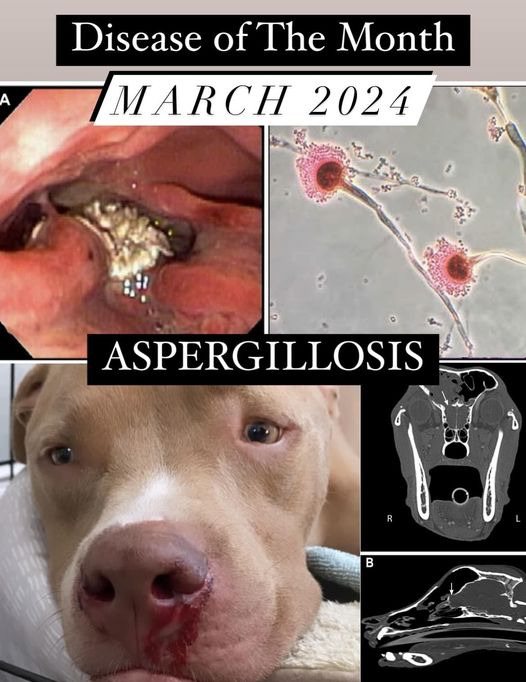
Aspergillosis is a fungal infection caused by a type of mold called Aspergillus. There are over 200 known species of Aspergillus fungi found worldwide that can grow either indoors or outdoors, and are commonly found in soil, dead or decaying vegetation, or spoiled food. They produce tiny asexual spores that can be easily inhaled or ingested, although do not generally lead to disease in humans or animals, unless the host has a compromised immune system or has significant exposure to the fungus.
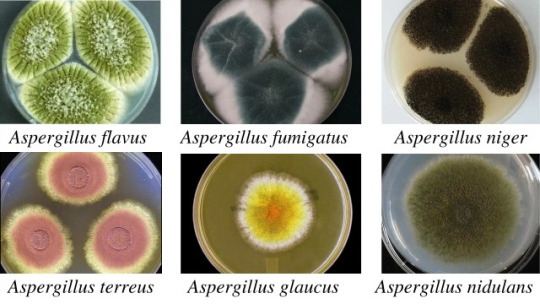

SINONASAL ASPERGILLOSIS
In dogs, especially dolicocephalic (long-snout) breeds such as the Greyhound, Collie, and Dachshund, aspergillosis is typically localized to the nasal cavity/sinuses. Symptoms of sinonasal aspergillosis include chronic sneezing and bloody nasal discharge, classically from one nostril, and sometimes depigmentation and/or ulceration of the nares.

Mucous will eventually build up into a "fungal ball", or aspillergoma, which can be detected under advanced imaging.

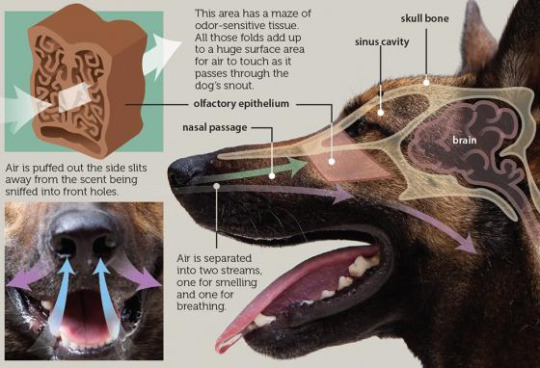
In severe cases, there will be marked damage of the nasal turbinates and the infection spreads from within the sinus cavity through the frontal bone of the skull, invading into the brain and central nervous system. For this reason, CT scan is highly recommended along with a rhinoscopy.
youtube
Historically, treating fungal infections with oral medications are very challenging, as the infections are often very slow to clear, and many anti-fungals available on the market are not only expensive, but may have severe side effects including liver damage and neurological symptoms. Because of this, the debridement of fungal lesions followed by topical infusion have become the gold standard treatment, as long as the cribriform plate of the skull is intact.
youtube
While under anesthesia, fungal plaque is removed with the guidance of a scope in the nasal cavity. In some cases, however, fungal plaque may be located in the sinuses but not in the nasal cavity - in which case trephination may be performed. An incision is made along the forehead to remove a layer of bone to create access.


Once the aspergilloma is debrided, a clotrimazole (anti-fungal) solution is infused into the nose and frontal sinuses while the the back of the patient's throat is closed off with gauze and foley catheters. (The patient is able to breathe through an endotracheal tube.) Cotton swabs are used to plug the nostrils, and the clovtrimazole solution incubates for 30 minutes to 1 hour, as the patient is periodically rotated to allow even distribution throughout the sinuses and maximize penetration.

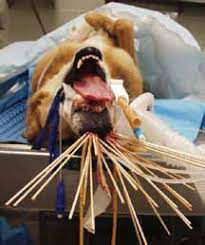

The clotrimazole solution is then drained out the nostrils and suctioned out. While this treatment has been shown to be highly effective, about 1/3 of patients may need repeat infusions.
If there is evidence that the infection has already eroded through the sinus bones and penetrated the brain, then the treatment described above may not be used, and oral medication would be recommended instead. Several months of treatment would be required, with a reported 60-70% success rate, compared to 86% observed in fungicide infusions.
DISSEMINATED ASPERGILLOSIS
Systemic aspergillosis occurs in dogs when the fungal spores diffuse past the respiratory system and enter the bloodstream, spreading to other sites within the body, including bone, spine, muscles, kidneys, as well as the eyes. A bronchopulmonary form of aspergillosis also forms in dogs, although rare.

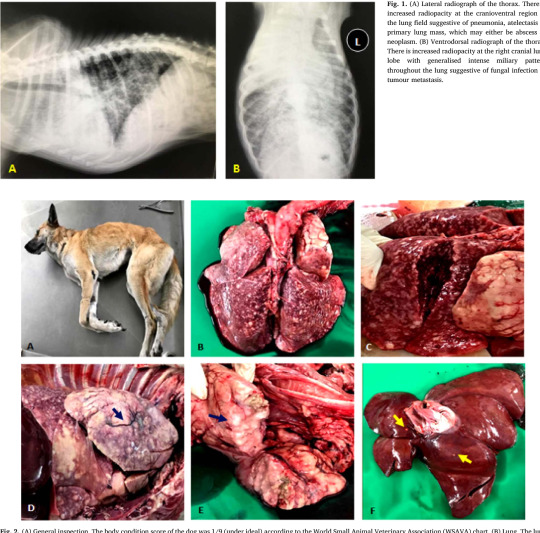
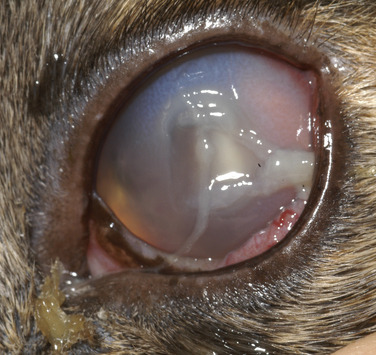
Although less commonly diagnosed, disseminated aspergillosis is most often observed in young-middle aged female German Shepherds and most commonly associated with the A. terreus species. Many patients may also have underlying immunocompromise, such as diabetes mellitus or concurrent bacterial infections, or are receiving immunosuppressive medications, such as glucocorticoids or chemotherapeutics.
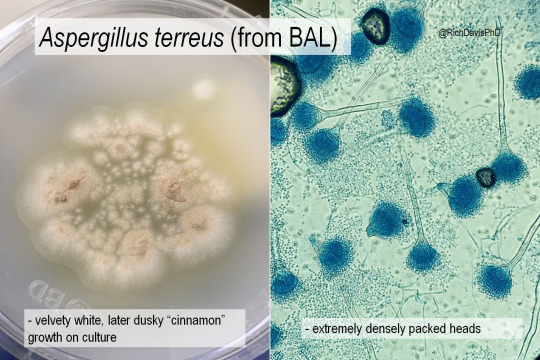
Clinical signs of disseminated aspergillosis are dependent on which organ(s) are involved, although many dogs may also show nonspecific signs such as anorexia, lethargy, and fever. Other symptoms of systemic involvement include weight loss, muscle wasting, hematuria, urinary incontinence, uveitis, and neurological deficits such as head tilt and ataxia. There are also often draining tracts (holes with pus or bloody discharge oozing out) in areas of infection.
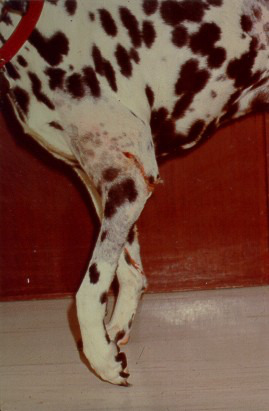
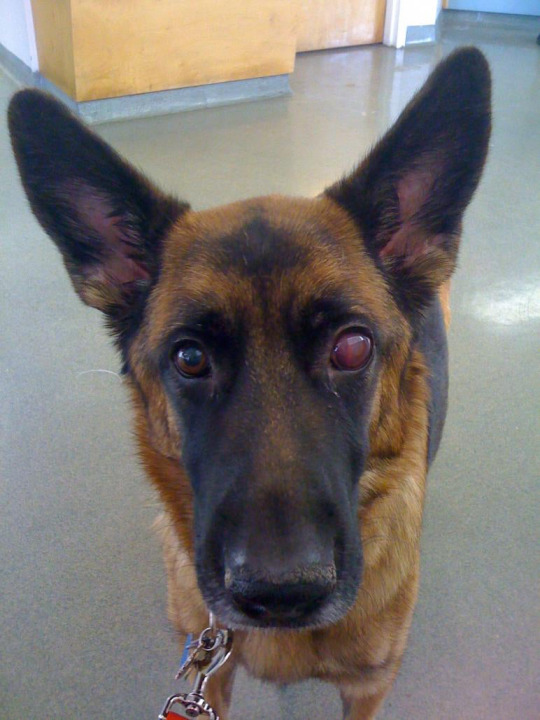
Diagnosing disseminated aspergillosis can actually be quite difficult and invasive. Unfortunately, many dogs are often terminal by the time aspergillosis is suspected, and have an extensive history of failed antimicrobial treatment before diagnosis.
Treatment is also particularly frustrating for these cases, either requiring years - or even lifelong - administration of anti-fungal drugs, and regular follow-ups to monitor for any side effects. While some anti-fungals like iconazole and fluconazole are more cost-effective than others, they are not as effective clinically. On the other hand, the ones that are more effective, like voriconazole, are also more expensive and more toxic over time.

Often times, surgery may also be required to remove the source of the fungal infection (i.e. limb amputation, osteotomy, lung lobectomy, enucleation, etc.). Although surgery may sometimes be curative, prognosis is generally very guarded to poor, as many dogs will often die of their disease before medication can begin to control their condition, or if the surgery required is out of reach.
However, treatment should still be considered in dogs with less severe clinical signs. While treatment of an opportunistic fungal infection is very challenging, early recognition and aggressive treatment can enhance the chance for success.
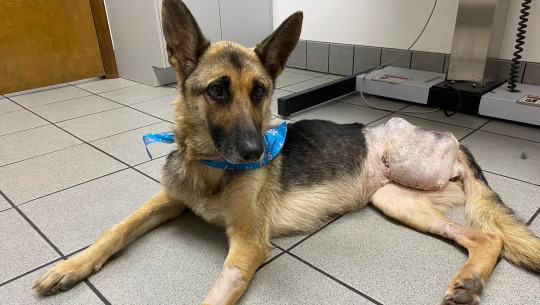

Sources/Further Reading:
Ballber, Clara, et al. “Minimally invasive treatment of sino‐nasal aspergillosis in dogs.” Journal of Veterinary Internal Medicine, vol. 32, no. 6, 16 Oct. 2018, pp. 2069–2073, https://doi.org/10.1111/jvim.15311.
Bennett, Peter F., et al. “Long term survival of a dog with disseminated Aspergillus deflectus infection without definitive treatment.” Medical Mycology Case Reports, vol. 22, Dec. 2018, pp. 1–3, https://doi.org/10.1016/j.mmcr.2018.07.002.
Brooks, Wendy. “Aspergillosis in Dogs.” Veterinary Partner, VIN (Veterinary Information Network), 1 Nov. 2023, veterinarypartner.vin.com/default.aspx?pid=19239&id=4952634.
Gull, Tamara. “Aspergillosis in Animals.” Merck Veterinary Manual, Merck & Co., Inc., Apr. 2023, www.merckvetmanual.com/generalized-conditions/fungal-infections/aspergillosis-in-animals.
Nelson, Whitney, and Audrey K. Cook. “When to Consider Aspergillosis in Dogs.” DVM 360, MJH Life Sciences, 1 Aug. 2010, www.dvm360.com/view/when-consider-aspergillosis-dogs.
Pascutti, Kristina, and Stuart A. Walton. “Approaches to Opportunistic Fungal Infections in Small Animals.” Today’s Veterinary Practice, 7 Apr. 2021, https://todaysveterinarypractice.com/internal-medicine/approaches-to-opportunistic-fungal-infections-in-small-animals/.
Renchler, J.S. “A Review of Systemic Aspergillosis in Dogs.” Clinical Reviews, Mira Vista Veterinary Diagnostics, Oct. 2020, miravistavets.com/fungal-diseases/aspergillus/review-systemic-aspergillosis-in-dogs/.
#aspergillosis#canine health#veterinary medicine#small animal internal medicine#fungal infection#sinonasal aspergillosis#disseminated aspergillosis#canine disease#dogs
1 note
·
View note
Text
0 notes
Link
0 notes
Link
0 notes
Link
Geographically, this report split EMEA into Europe, the Middle East and Africa, With sales (K Units), revenue (Million USD), market share and growth rate of Anti-infective Endotracheal Tube for these regions, from 2012 to 2022 (forecast) Europe: Germany, Fran
0 notes
Text
Antimicrobial Endotracheal Tube EMEA Market Report 2017
Antimicrobial Endotracheal Tube EMEA Market Report 2017
ReportsMonitor.Com Adds “Anti-infective Endotracheal Tube Market Size, Industry Analysis & Forecast Report 2017” To Its Database. In this report, the EMEA Antimicrobial Endotracheal Tube market is valued at USD XX million in 2016 and is expected to reach USD XX million by the end of 2022, growing at a CAGR of XX% between 2016 and 2022.
Geographically, this report split EMEA into Europe, the Middle…
View On WordPress
0 notes
Text
0 notes
Text
Anti-infective Endotracheal Tube EMEA Market Report 2017
Anti-infective Endotracheal Tube EMEA Market Report 2017
ReportsMonitor.Com Adds “Anti-infective Endotracheal Tube Market Size, Industry Analysis & Forecast Report 2017” To Its Database. In this report, the EMEA Anti-infective Endotracheal Tube market is valued at USD XX million in 2016 and is expected to reach USD XX million by the end of 2022, growing at a CAGR of XX% between 2016 and 2022.
Geographically, this report split EMEA into Europe, the…
View On WordPress
0 notes